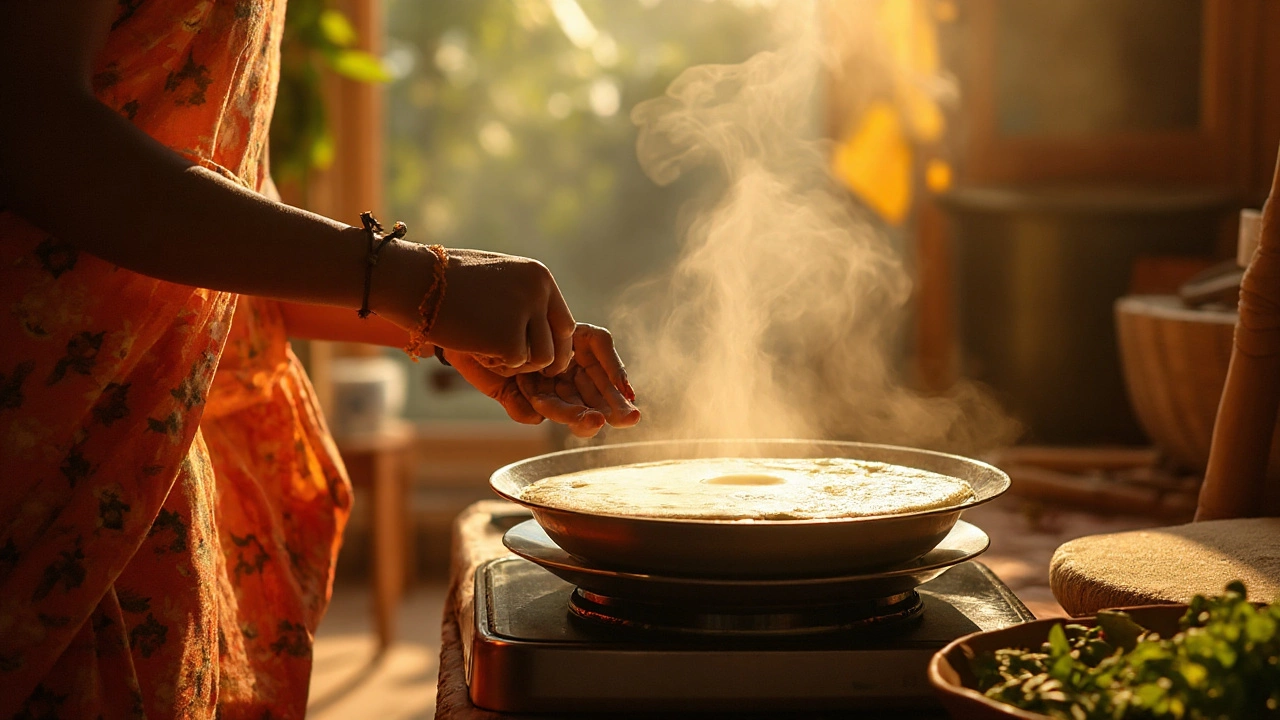Instant Dosa Fermentation: Quick Tips for Fluffy, Crispy Dosas
When working with instant dosa fermentation, the process of quickly leavening dosa batter to achieve a light, airy texture without an overnight rest. Also known as quick dosa rise, it lets you enjoy fresh dosas even on a rushed morning. This technique ties closely to dosa batter, a blend of soaked rice and urad dal ground into a smooth paste, relies on proper fermentation, the growth of natural microbes that create bubbles and lift in the batter, and can be boosted with baking soda substitutes, ingredients like yogurt, lemon juice, or a pinch of yeast that add instant acidity and carbon dioxide. Finally, the choice of best oil for dosa, a neutral‑tasting oil or clarified butter that crisps the surface without smoking rounds out the recipe.
Instant dosa fermentation is a game‑changer for anyone who loves South Indian breakfasts but hates waiting. Most traditional recipes call for 8‑12 hours of room‑temperature proofing, but you can cut that down to 1‑2 hours with the right tricks. The core idea is simple: give the batter a quick boost of acidity and gas, then keep it warm enough for the microbes to work fast. This saves time while still delivering the signature puffiness that makes dosas so satisfying.
Start with the right batter composition. A classic ratio is 2 parts rice to 1 part urad dal, soaked separately for at least 4 hours. After grinding, the mixture should be smooth but not watery – think thick pancake batter. Adding a pinch of salt at this stage helps the microbes, and a splash of water fine‑tunes the consistency. The resulting dosa batter sets the stage for rapid fermentation; any excess water will dilute the acidity and slow the reaction.
If you need an instant lift, reach for the baking soda substitutes you already have in the pantry. Yogurt adds lactic acid, lemon juice contributes citric acid, and a tiny pinch of active dry yeast supplies ready‑made carbon dioxide. The rule of thumb is ½ cup of yogurt or 1 tbsp lemon juice per cup of batter, or ¼ tsp yeast if you’re in a hurry. Mix it in gently, then cover the bowl with a clean cloth and place it in a warm spot – an oven with the light on or a sunny windowsill works well.
Temperature is the hidden lever behind successful fermentation. Aim for a steady 30‑35°C (86‑95°F). Below that, the microbes crawl; above 40°C (104°F) they die. If your kitchen is cool, a microwave (set to low) or a heating pad under the bowl can maintain the sweet spot. In just an hour or two you’ll see bubbles forming on the surface – that’s the signal to start cooking.
When you finally pour the batter onto a hot skillet, the best oil for dosa makes a difference. A thin layer of vegetable oil or a swirl of ghee prevents sticking and creates the golden crunch you crave. Too much oil makes the dosa soggy; too little leads to tears. The ideal amount is about 1 tsp per 10‑inch pan, spread quickly with a paper towel.
Common issues like flat or dense dosas usually point back to the batter or the fermentation step. If the batter looks too thick, thin it with a little water; if it’s still flat after the warm rest, add a pinch more lemon juice or a dash of baking soda. Remember, a fluffy dosa is the result of three things working together: a well‑balanced dosa batter, active fermentation, and the right heat and oil on the pan.
Now that you know how to speed up the process, you’ll find a range of tips, substitute guides, and troubleshooting tricks in the articles below. Dive in to master instant dosa fermentation and never miss a breakfast again.
How to Ferment Dosa Batter Instantly: Quick Tricks for Perfect Crisps
Learn proven shortcuts to ferment dosa batter immediately using heat, starter culture, or simple chemistry, so you can enjoy crisp dosas without waiting.
Read more